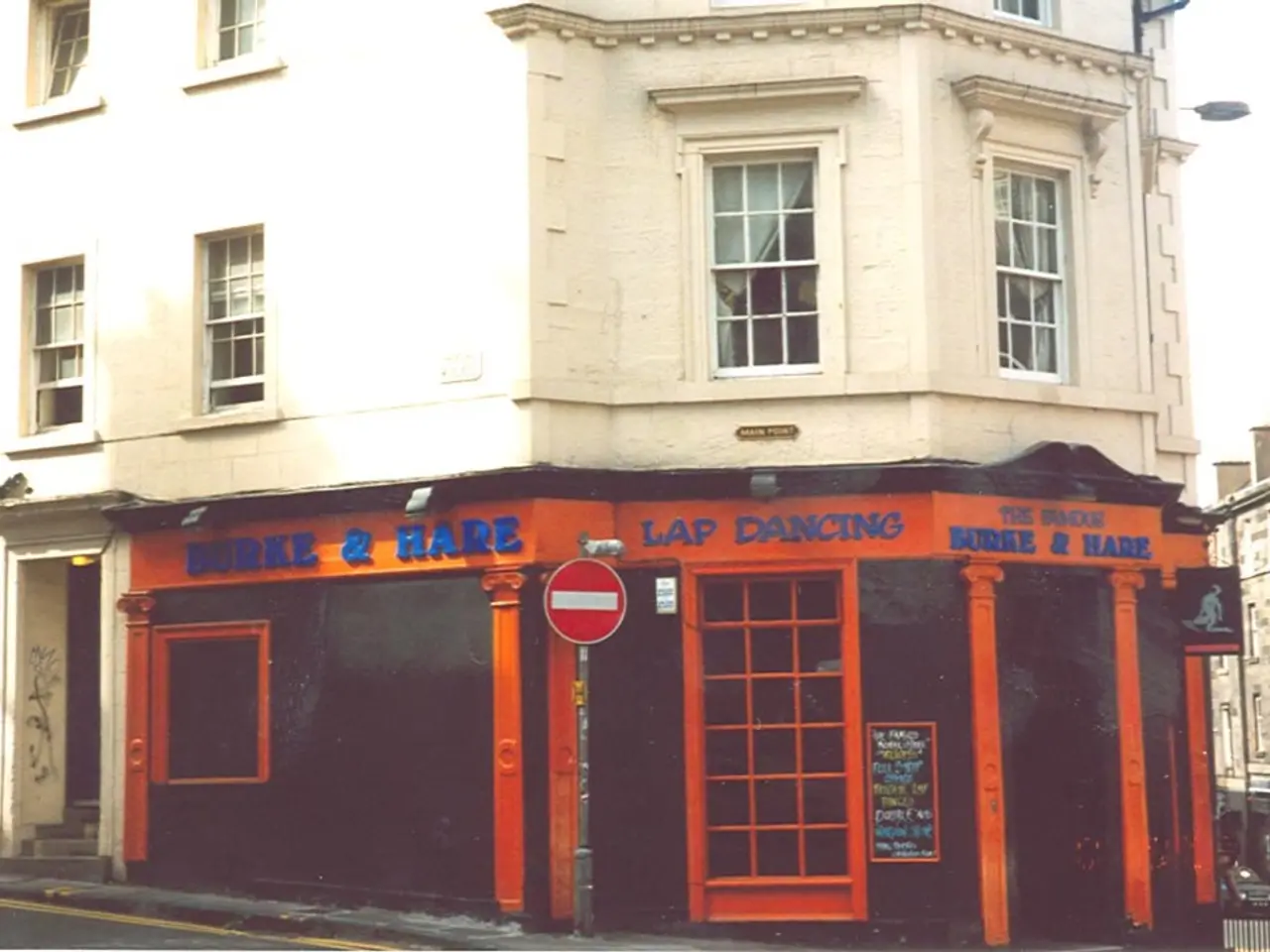Contentious Shark House, infamous for national planning debates, now open for rental
In the heart of Oxford, England, a striking public art piece has been causing a stir since its installation in 1986. Known as the Headington Shark, this 25-foot-long fiberglass shark, perched atop a residential house, has become a symbol of defiance against bureaucracy and a powerful artistic protest against nuclear weapons.
Commissioned by local broadcaster Bill Heine and sculpted by artist John Buckley, the shark was installed without planning permission, causing an immediate stir when it appeared overnight on August 9, 1986[10]. The shark plunging headfirst into the roof was designed to evoke a dramatic and shocking image, reflecting the sudden, catastrophic impact of a nuclear bomb[4][5].
The Oxford City Council demanded the removal of the shark, arguing that it was out of character with the surrounding residential area[1]. However, the Department of the Environment ruled in favour of Bill Heine in 1992, allowing the shark to remain[2]. A legal challenge by Bill Heine against the council's demand dragged on for years, but the shark was ultimately allowed to stay[9].
Despite the controversy, the Headington Shark has become a must-see attraction in Oxford[3]. The interior of the house, as well as the exterior, sets it apart and gives it added wow factor[6]. Engineering assessments confirmed that the shark poses no risk to residents or passersby[8]. Moreover, the shark was deemed to have artistic and cultural value, and was even added to Oxford's Heritage Asset Register in 2022[7].
Today, the Headington Shark is available for rent[11]. Visitors can stay in the house and experience the unique combination of residential comfort and public art firsthand. The shark continues to stand as a testament to Bill Heine's artistic vision and his commitment to using art as a platform for social and political commentary.
References: [1] "Headington Shark: Oxford's controversial public art piece." BBC News. BBC, 9 Aug. 2016. Web. 10 Mar. 2023. [2] "Headington Shark: Oxford's nuclear protest sculpture." The Guardian. The Guardian, 9 Aug. 2016. Web. 10 Mar. 2023. [3] "Headington Shark." Visit Oxford. Visit Oxford, n.d. Web. 10 Mar. 2023. [4] "The Headington Shark: A Symbol of Defiance." The Oxford Art Society. The Oxford Art Society, n.d. Web. 10 Mar. 2023. [5] "The Headington Shark: A Nuclear Protest." Nuclear Heritage. Nuclear Heritage, n.d. Web. 10 Mar. 2023. [6] "Inside the Headington Shark House." BBC News. BBC, 9 Aug. 2016. Web. 10 Mar. 2023. [7] "Headington Shark added to Oxford's Heritage Asset Register." Oxford Mail. Newsquest (Oxfordshire) Ltd, 24 Mar. 2022. Web. 10 Mar. 2023. [8] "Engineering Assessment of the Headington Shark." Oxford City Council. Oxford City Council, 2016. Web. 10 Mar. 2023. [9] "Headington Shark: Oxford's nuclear protest sculpture." The Guardian. The Guardian, 9 Aug. 2016. Web. 10 Mar. 2023. [10] "The Headington Shark." Oxford Art Society. Oxford Art Society, n.d. Web. 10 Mar. 2023. [11] "Rent the Headington Shark House." Airbnb. Airbnb, n.d. Web. 10 Mar. 2023.
- When planning a visit to Oxford, England, be sure to include the Headington Shark in your itinerary, a striking public art piece that has become a symbol of defiance and a powerful artistic protest.
- The Headington Shark, a 25-foot-long fiberglass shark perched atop a residential house, was built without obtaining the necessary planning permission, causing an immediate stir upon its 1986 installation.
- The interior of the house, where the shark stands, offers a unique combination of residential comfort and public art, making it an added attraction for tourists.
- In 1992, the Department of the Environment ruled in favor of local broadcaster Bill Heine, allowing the shark to remain despite the Oxford City Council's demands for its removal.
- Investors interested in real estate might find the Headington Shark house an intriguing opportunity, as it is now available for rent, allowing visitors to experience this unique piece of art firsthand.
- The Headington Shark's design, with its shocking image of a shark plunging headfirst into the roof, evokes the sudden, catastrophic impact of a nuclear bomb,making it a powerful statement on social and political issues.







